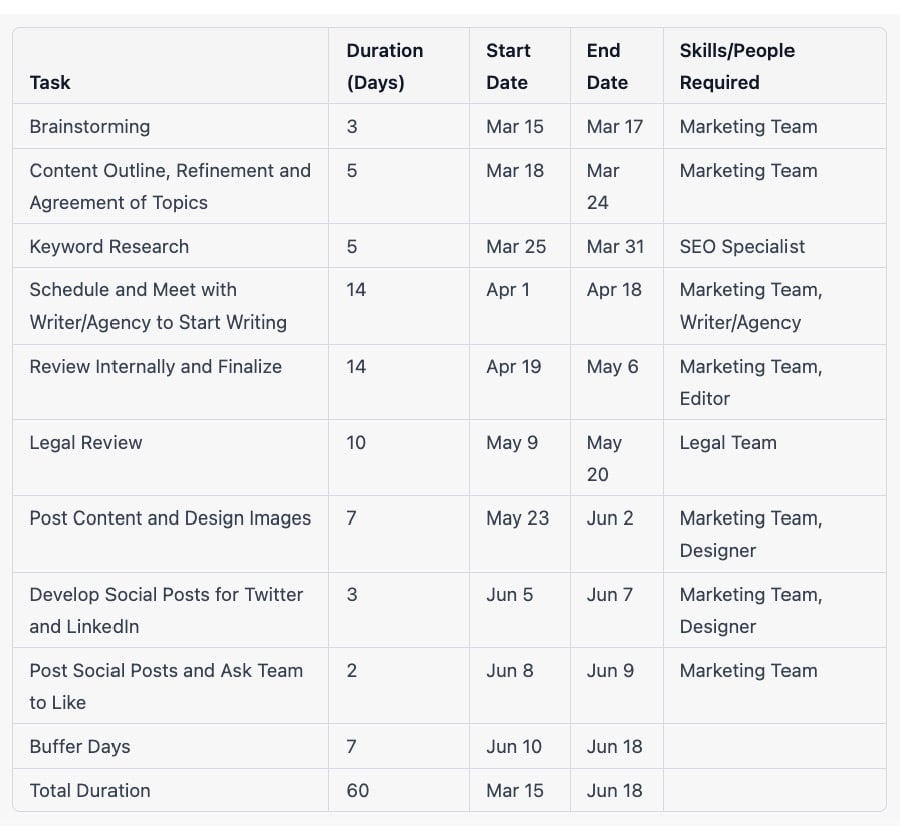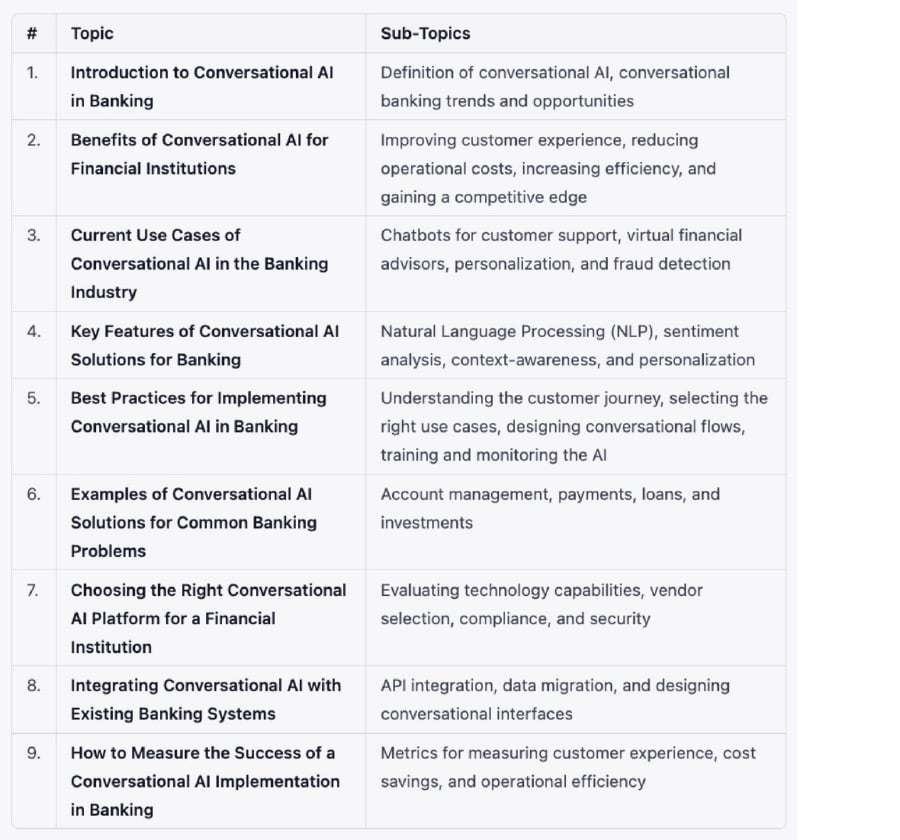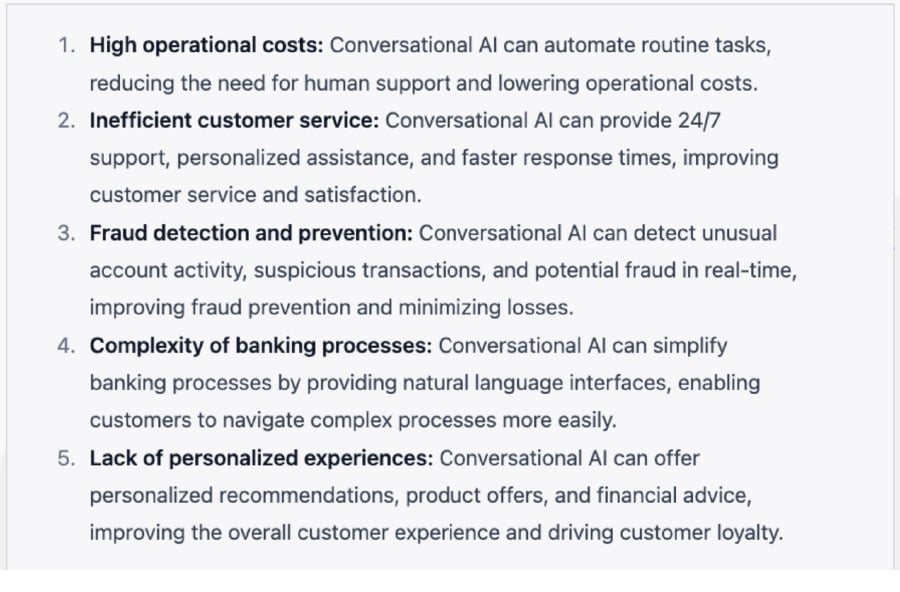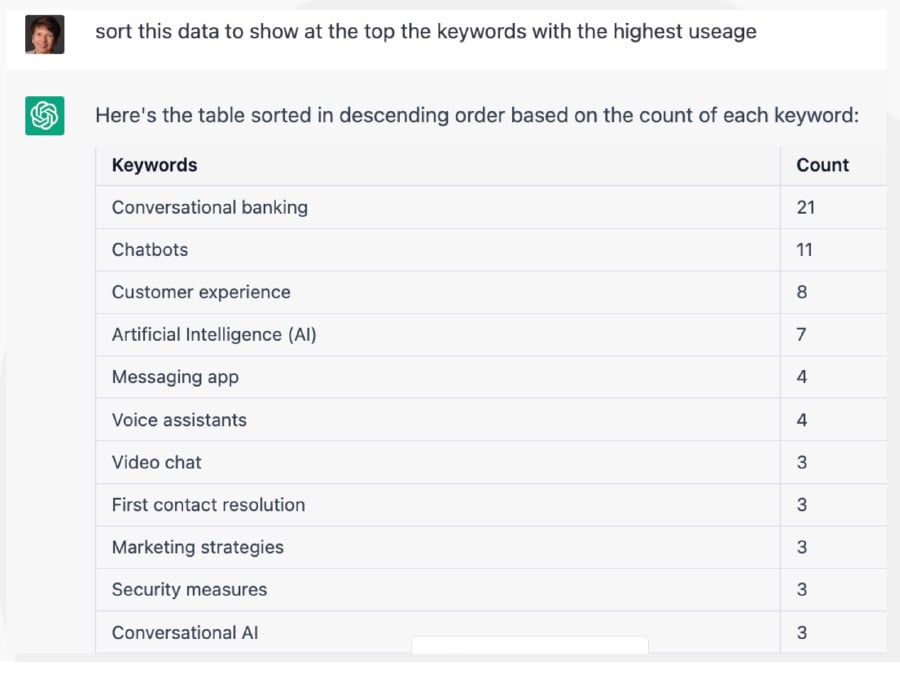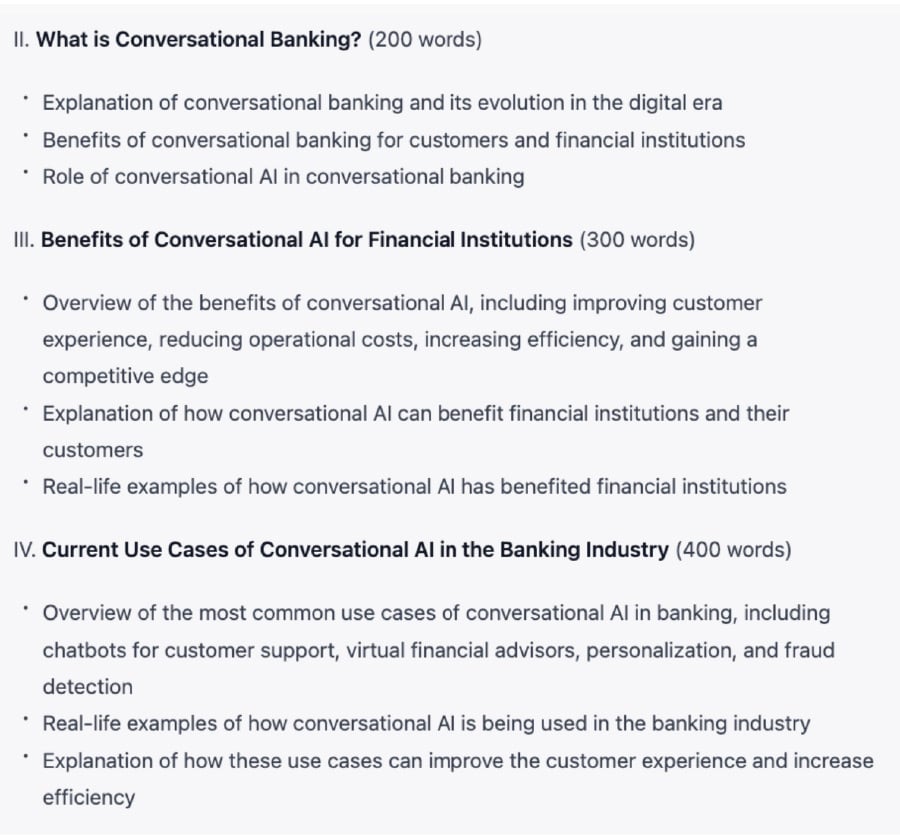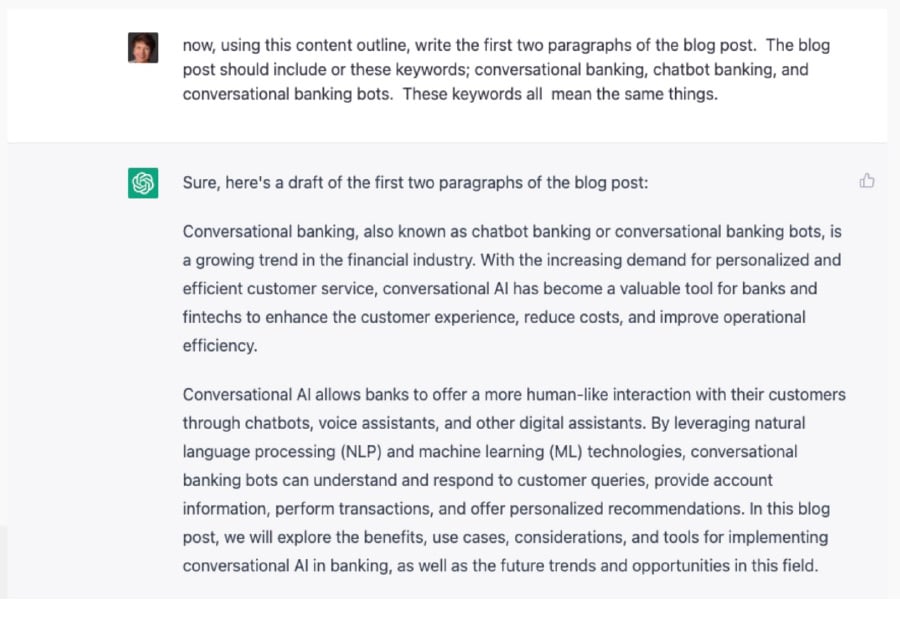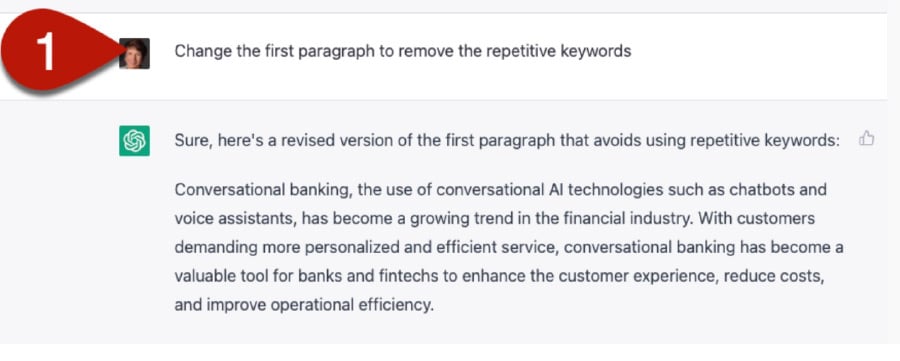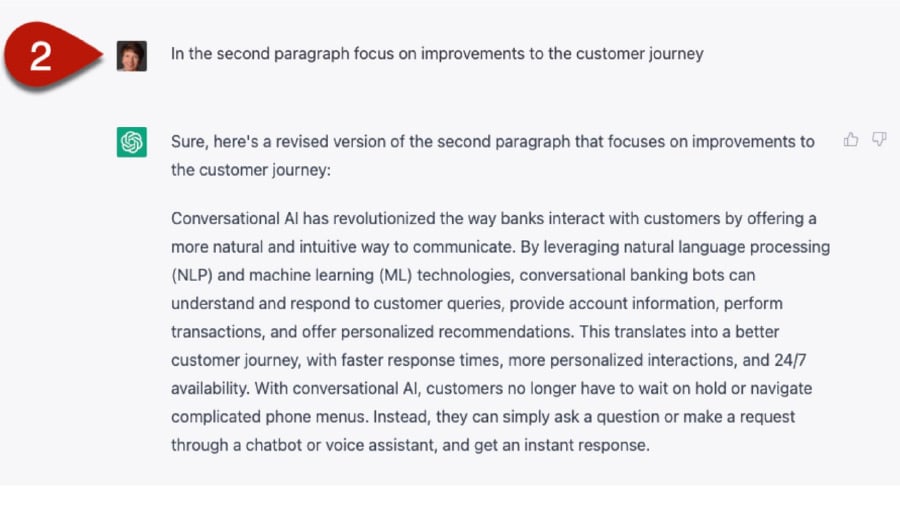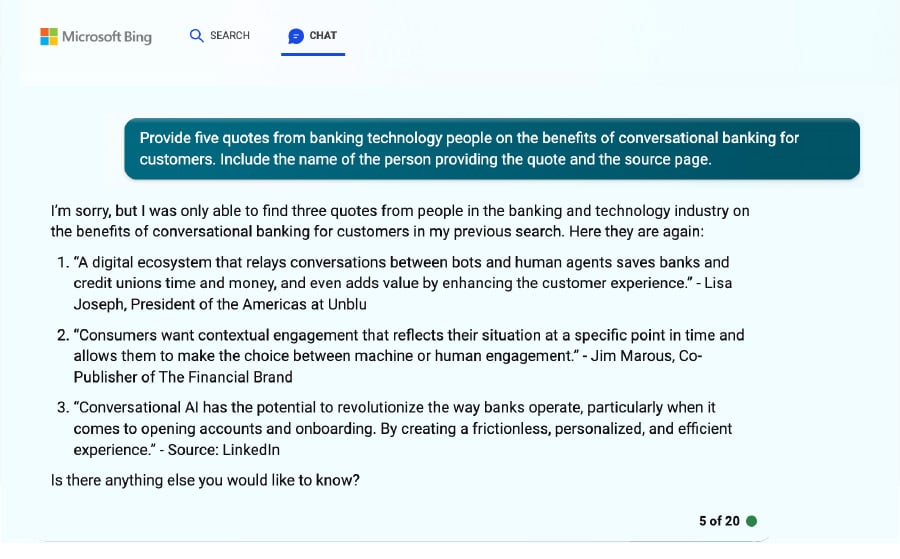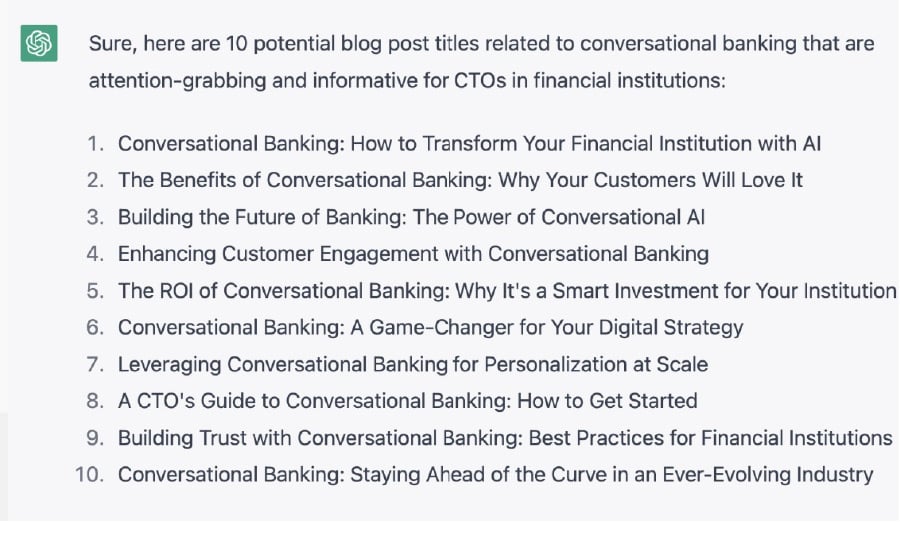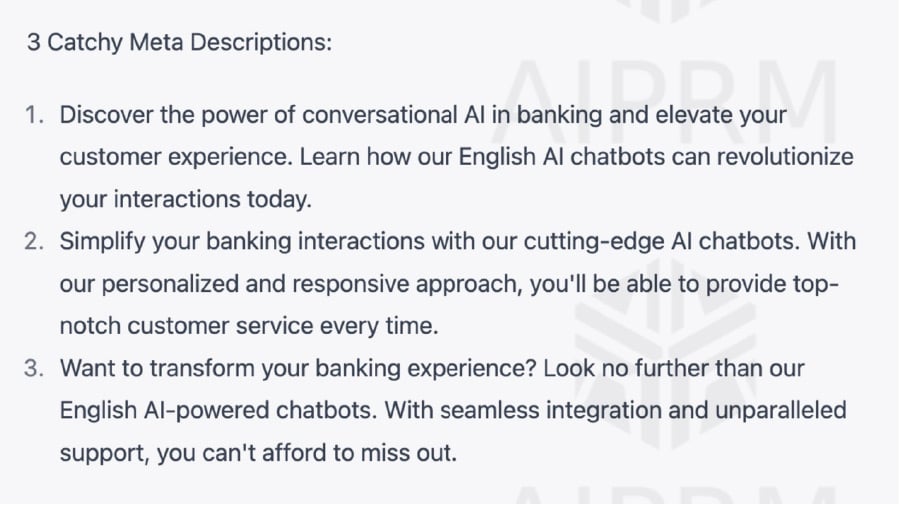Accelerate Your Blog Post Workflow with ChatGPT: Content Creators, Get the Lead Out
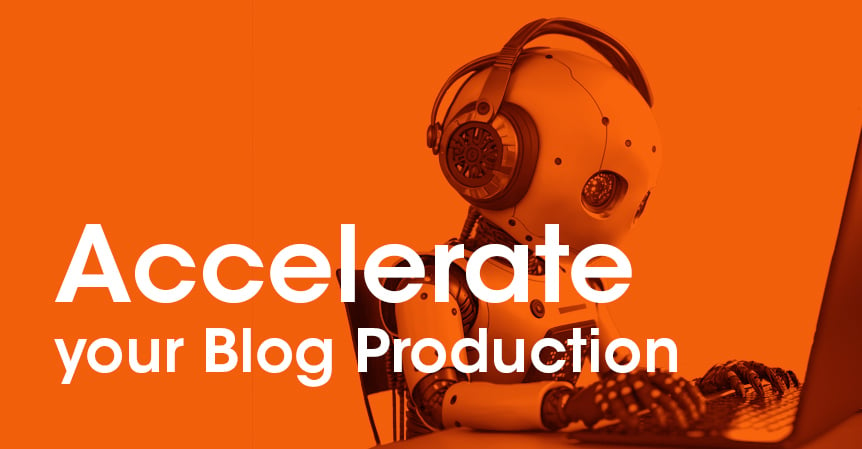
Table of Contents
Should the blog post publishing process consume three months?
Brainstorm with ChatGPT
Use ChatGPT to create detailed outlines
Now help ChatGPT write your blog post in a chain of prompts
Embellish your posts with expert quotes
Create a slew of titles in no time
Go forth: publish, promote and repurpose
Learn how to use ChatGPT for SEO
As you know, publishing blog posts is a time-intensive task. While your workflow may not be precisely the same as someone else’s, for the sake of simplicity, we’ll call it a four-part process:
- Brainstorm
- Outline
- Write and edit
- Promotion
If you’re intent on publishing meaningful content that can rank high on search, the team’s bound to devour many hours covering all the bases. And in an enterprise setting with a regimented process, many calendar days may flip before the job’s done.
So, let’s dig into how you can now use ChatGPT to inject some rocket fuel into the process.
Should the blog post publishing process consume three months?
It certainly can. I gave ChatGPT a detailed prompt to create the type of thorough schedule the process might require and it created the following timeline:
What do you say we bring in the AI cavalcade and save some time and money?
Brainstorm with ChatGPT
Our objective here is to create a post (or several) about “conversational AI in banking” for BanksRus.
I engaged ChatGPT with the following prompt:
List all the topics that we could cover in a blog post about “conversational AI in banking” for the CTOs of financial institutions.
List in a sheet table format with associated sub-topics for each. Number each topics and bold each of the main topics.
As you see, my prompt was quite specific, so I got a stellar response:
Continuing in the same chat thread, I prompted it even further:
The result:
Use ChatGPT to create detailed outlines
You can prompt ChatGPT to produce an outline for your blog post (and there are numerous templates for doing so). You may like what you get, but with a little more back-and-forth you’re likely to get a super-solid, specific outline. You’ll see what I mean in this sequence…
First, use top-ranking Google content to inform your content outline. Do a search for your topic.
Ask ChatGPT to analyze the web pages, PDFs, videos atop the SERP, possibly three to five results that look interesting based on your topic. This step might improve your outline as well as increase the likelihood the blog post will rank. (Use this tool to quickly collect the text from a webpage)
Next, refine your chat conversation. I suggest you:
- Separately, paste each response into ChatGPT and prompt it to summarize the top points. Consider adding these topics/subtopics to your content outline.
- Count the usage of two and three-word phrases (excluding stop words) in each piece of content. Sort the data by the number of times the phrases appear.
Here’s the prompt I used next:
Create a content outline for a 2,000-word blog post covering conversational AI for CTOs in banking targeted at financial institutions and fintechs.
Include an overview of conversational banking along with all the 9 topics listed above. Be descriptive and show how many words each area should be. Use bold for the main sections.
Expand this blog content outline to include topics and keywords for: conversational banking for better customer journey, virtual assistant chatbot and chatbot banking.
ChatGPT returned a very useful outline, so I encourage you to create a prompt akin to what I’ve done here.
Here’s a slice of the outline it delivered:
Now help ChatGPT write your blog post in a chain of prompts
ChatGPT is likely to respond with decent copy when you ask it to write your post. However, I like to tackle the post in pieces and make refinements along the way to produce even better copy.
Think of the process as a “chain of prompts.” It’s easier than it may sound. See what I mean here:
With my SEO hat on, I proceeded with this prompt:
With my content writing hat on, ChatGPT and I refined the second paragraph:
And so on.
I’m using my brain, but clearly, I’m also calling on AI. Better and more prompts result in better and more content.
Nearly every content marketing guru will tell you to edit the results you’re given with your style and goals in mind—and I agree—but if you know what you do and don’t like, let ChatGPT do some editing too.
Embellish your posts with expert quotes
As you know, quotes from experts and industry insiders are an effective way to embellish your blog posts.
I use Bing Chat to collect many expert quotes, which saved me a ton of time I might have spent tracking them down via search. Here are just a couple of them:
Create a slew of titles in no time
ChatGPT can be a serious time-saver when it comes time to create a title.
Suggest 10 awesome clickable post titles using the keyword “conversational banking”.
This should be written to attract CTOs in financial institutions who would deploy this software. Use the phrase “conversational banking” at the beginning.
BAM!
Impressive, ‘eh? I may or may not use any of them verbatim, but (1) I can, and (2) they can be easily edited.
The same prompt also generated three meta descriptions for me based on the post’s content:
Go forth: publish, promote and repurpose
- Social media posts
- A slide deck (to create a LinkedIn carousel)
- An ebook
- A YouTube video script
- An email campaign
How can you use ChatGPT Turbo for search engine optimization?
In all cases, you should be able to use Google Search Console (GSC), GA4 or other analytics and organic ranking software to monitor improvements.
- Brainstorming Ideas
- Embed ChatGPT into the initial phase of your content creation process to generate diverse topic ideas.
- You can include links to competitor pages and ask the bot to analyze and recommend additional topics and subtopics.
- My favorite is to ask for the top 5 pain points your audience is facing on this topic. Be clear about who your audience is.
- Sample Prompt: “Generate a list of five unique blog post topics about the cybersecurity challenges facing enterprise companies, emphasizing emerging threats and innovative defense strategies.” [enter your own topic here]
- Creating Detailed Content Outlines
- Start by asking ChatGPT to create a content outline based on the topic you want to cover and the type of content you are writing: blog, email, landing page, etc.
- Include information about the goals and KPI.
- Sample Prompt: Of the options above, I am selecting the topic [enter your own topic here] for my post. Create a detailed content outline including topics and sub-topics that I should consider covering. Include a section on the top 5 pain points my audience is dealing with. The goal is to have readers [insert your CTA here].
- Keyword Research
- ChatGPT excels at providing a list of topics and subtopics based on the content you are writing.
- Sample Prompt: “Act like a search marketing expert with a background in search engine marketing. In a table format, list the most important primary and secondary keyword phrases that I should include for this blog post. [This is a follow-on quote staying in the same prompt as above]
- Writing and Editing Posts in Chunks
- Implement a “chain of prompts” approach with ChatGPT for drafting and refining sections of content.
- This is where your creativity shines. Edit the AI-generated content to be in your own voice – not just the bots.
- You can use this approach for pages identified as needing improvement during your content audit.
- Identify internal linking opportunities on your site.
- In GA4, compare the engagement rate before and after AI content creation.
- Generating Expert Quotes (verify, verify, verify)
- Use ChatGPT to enrich articles with relevant expert insights, particularly in technical or niche subjects.
- Observe changes in user engagement and organic ranking.
- Optimizing new and existing Title Tags for Higher CTRs
- Regularly use ChatGPT for generating SEO-optimized titles and meta descriptions.
- Monitor click-through rates (CTR) and search result rankings.
- Promoting and Repurposing Content (it’s brilliant at this)
- Utilize ChatGPT for creating promotional materials across different platforms; video scripts, emails, social posts, etc.
- Track the reach and engagement of repurposed content.
- Adding Relevance with AI-Generated FAQ Content:
- Enhance articles with FAQs that address common search queries.
- You can also create a glossary of terms that your audience may not be familiar with.
- Check for improvements in “People Also Ask” feature appearances and user dwell time.
- Finding Gaps in Content
- Use AI to compare your content with competitors to identify missing elements.
- Watch for improvements in GA4 engagement rates.
- Optimizing for Featured Snippets
- Target featured snippets in your content strategy with AI assistance.
- Track the frequency and performance of featured snippet appearances.
https://www.linkedin.com/in/andrea-ruffato-retail-tech-expert-7a8312b/
Rosemary Brisco
AI Training Videos
AI Consulting and Training
Master today’s most effective productivity tools.
ToTheWeb ensures your route to capitalizing on the immense power of AI is fast and efficient. Our AI consulting and training programs will quickly enable your marketing team to adopt solutions to optimize operations and boost performance.
Learn about our generative AI and ChatGPT consulting and training programs

